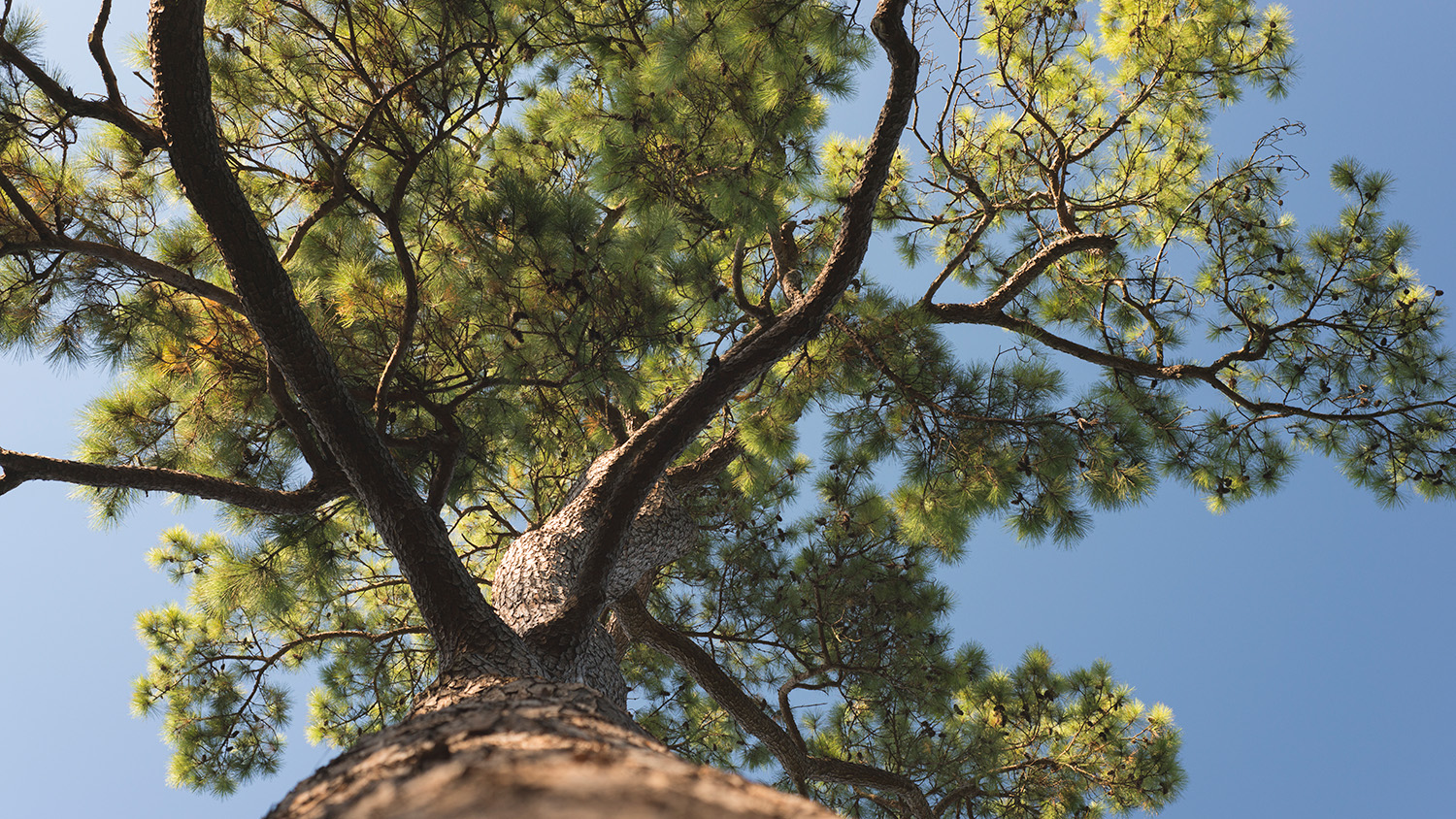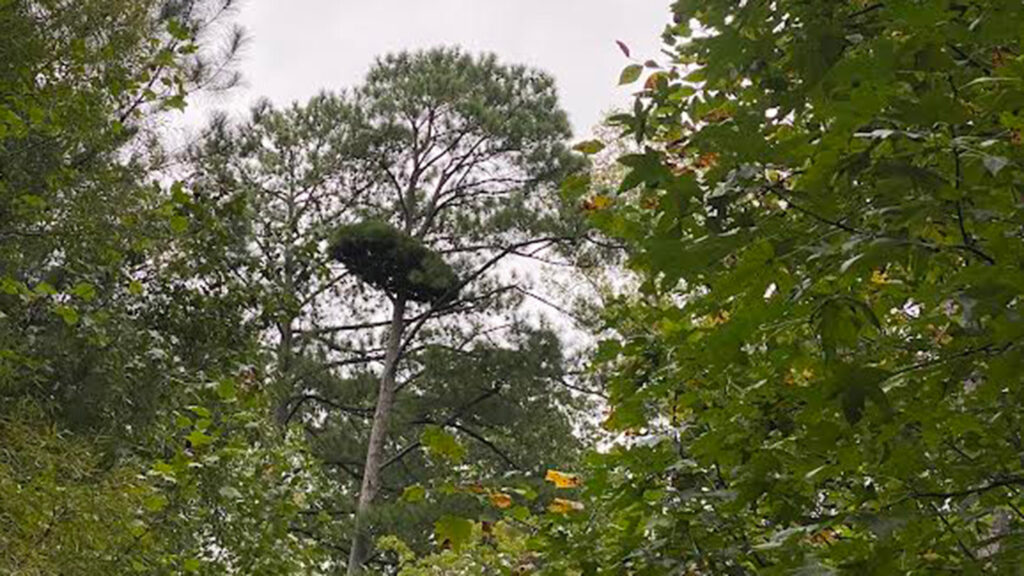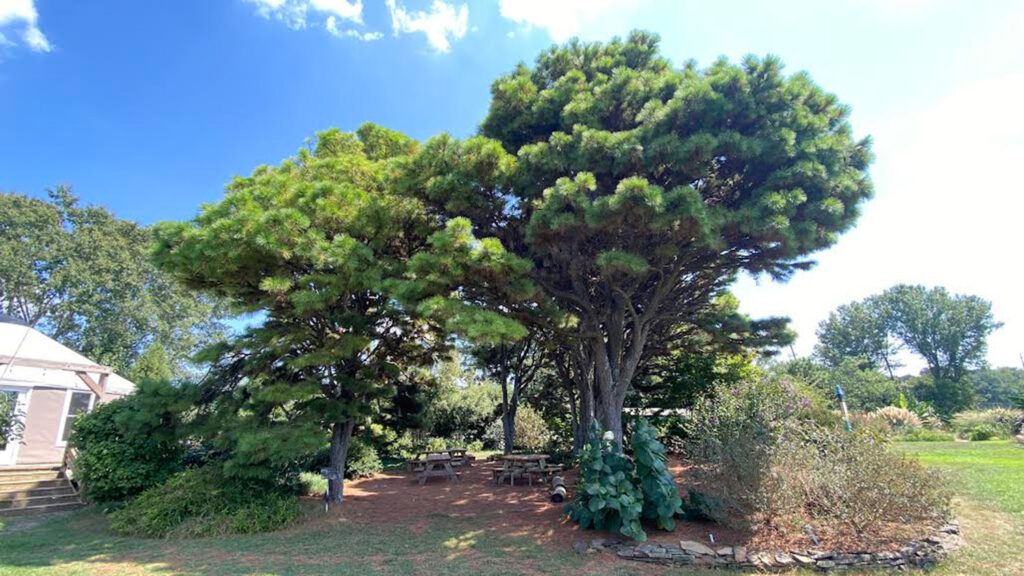Can You Find the Witch’s Brooms? Forestry Experts Need Your Help

If you’re in need of a challenge this Halloween season, you can forgo the pumpkin carving contest to help NC State researchers find “witch’s brooms” in loblolly pine trees.
Witch’s brooms are abnormal growths on tree branches caused by pests, diseases or genetic mutations. On loblolly pine trees, they appear as rounded, dense clusters of needles.
Researchers with the Tree Improvement Program are asking the public to help them look for witch’s brooms in loblolly pines so that they can sample the needles and cones.
Loblolly pines are common in the southeastern United States, but witch’s brooms rarely occur in the trees and aren’t always easily visible.
“You can spend an entire day in the field and potentially only find one broom out of a thousand trees,” said Nasir Shalizi, a data analyst with the Tree Improvement Program.
Shalizi and his colleagues want to determine the genetic mutation that causes witch’s brooms in hopes of producing smaller trees with higher seed yields.

In the 1960s, NC State researchers grew the seeds of a witch’s broom from a loblolly pine to find that the offspring developed into dwarf trees.
Loblolly pines grow rapidly and can exceed 60 feet in height, while dwarf loblolly pines grow slowly and only reach up to about 20 feet in height.
Dwarf loblolly pines could prove useful to seed production in seed orchards owned by the members of the Tree Improvement Program.
The program’s members plant genetically-improved loblolly pine in several orchards to mass-produce seeds for nurseries and other growers.
Seed orchard technicians and other workers often have to use bucket lifts to collect cones from the trees because they’re too tall to reach safely.
“If we can identify the genetic mutations that cause dwarfism, we can produce smaller trees that would make the breeding and cone collection process easier and safer,” Shalizi said.

As the researchers collect samples from witch’s brooms, they will extract the seeds from the cones and then plant them to identify segregation patterns.
Seed cones, which are the male reproductive structures of conifers such as loblolly pine, produce the pollen that fertilizes the female flowers of neighboring trees.
Half of the seeds collected from the cones of witch’s brooms are expected to grow into dwarf trees, while the other half are expected to grow into normal trees.
“This is because only the female is mutant, but the pollen is not,” Shalizi said. “Dwarfing genes in pine trees are expected to be dominant so the expectation is that half of the progeny would be dwarfs and half are not.”
The researchers also plan to conduct genotyping on needles from witch’s brooms and normal branches in the future to compare their genetics.
“Genotyping will help to confirm that dwarfism is a heritable trait. We can then work to identify the specific genes that cause dwarfism so that we can pass them from one generation to another to produce dwarf trees,” Shalizi said.
Shalizi added that researchers will graft the flowering part of an improved loblolly pine to the root system of a dwarfed tree, or the shoot system of a dwarfed tree as an interstock, to see if they can promote flowering and modulate the size of the seed-producing scions.
While the rootstock or interstock is expected to cause the trees to grow slower and shorter, the flowering part of the tree will retain its improved genetics and potentially produce more seeds.
Those seeds will ultimately benefit the forestry industry and the environment, growing into trees that are not only more resistant to pests and diseases but also able to store carbon effectively due to their high growth rate.
Shalizi and his colleagues have identified 40 loblolly pines with witch’s brooms in North Carolina so far. They plan to sample about 25 this year.
The general public can help Shalizi and his colleagues by submitting information about the location of witch’s brooms through this Google form.


